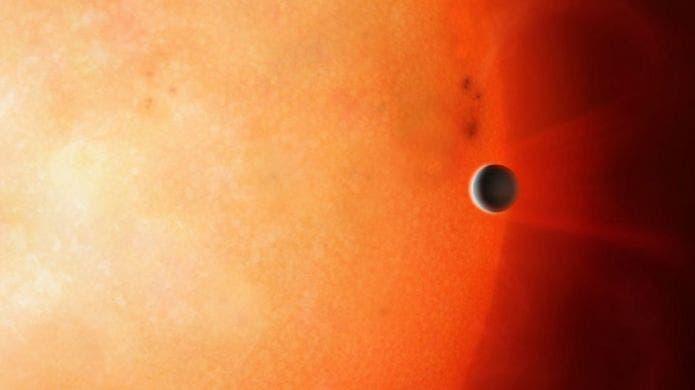
Gas giants like Jupiter and Saturn are mind-bogglingly huge, but that’s because their atmospheres are exceptionally thick. In fact, to this day, scientists aren’t sure what lies beneath their atmospheric shell of hydrogen and nitrogen. But a distant ‘failed’ gas giant may offer some clues.
A team of astronomers led by researchers at Warwick University has identified the first core of a gaseous world, offering an unprecedented glimpse into what such solid core might look like.
The researchers were initially running a survey of exposed planetary cores from data gathered by the TESS space telescope. That’s when they came across TOI 849 b, a large object circling a sun-like star about 730 light-years away from Earth.
Follow-up observations with the HARPS spectrograph in Chile confirmed that the object was truly massive. Although the exoplanet is three-and-a-half times larger than Earth, it’s around 39 times more massive.
Considering its size and density, the only viable explanation is that TOI 849 b is actually the core of a former gas giant — now, just a rocky giant.
It might not be a pretty sight either. The core is estimated to complete a full orbit around its parent star every 18 hours, which means it’s mighty close to solar radiation. Its surface temperature is believed to be around 1,527 degrees Celsius as a result.
Although it’s not clear how TOI 849 b lost its gaseous envelope, the astronomers have proposed two plausible scenarios. The most likely explanation is that extremely powerful tidal forces generated by the close orbit ripped apart the gas atmosphere. Alternatively, the former gas giant may have collided with another planet.
The second possibility is that TOI 849 b never had the chance to complete its gaseous atmosphere. This may have occurred due to a gap in the disc of gas and dust from which it was forged. However, the researchers are less inclined to lean on this hypothesis.
“I think one of the biggest clues is that we found the planet inside the ‘Hot Neptunian desert’, which is this region of parameter space where we don’t typically find planets,” lead author David Armstrong told BBC News.
“That hints that it has gone through quite an unusual evolution. To me that hints that it is more likely that it did lose its atmosphere… but we’ll need some more observations to be sure.”
Although TOI 849 b is hundreds of light-years away, the rocky core might provide invaluable insights about planets closer to home.
Initially, scientists believed that Jupiter would have a solid core covered in a ‘crust’ of liquid hydrogen that is bombarded by helium rain. However, relatively recent observations performed by the Juno spacecraft showed that the gravitational measurements don’t add up, pointing instead towards “a core that is not solid like Earth’s, but “fuzzy” and dilutely mingled with the overlying metallic hydrogen layer,” New Scientist reports.
But, the jury is still out and there are many unknowns regarding the nature of Jupiter’s core, or those of Neptune or Saturn for that matter. Perhaps TOI 849 b can teach us a thing or two about what gas giants look like beneath their thick atmosphere. At the very least, the new study shows that rocky cores exist, and astronomers can now be on the lookout for more.
The findings appeared in the journal Nature.
Updated: post corrected for spelling and language.


